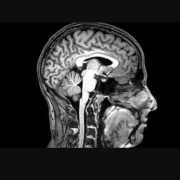Another recent study found that a unique signature exists in the brains of people suffering from loneliness, which makes them fundamentally distinguishable from others.
While loneliness has been a matter of concern for psychiatrists and psychologists since time immemorial, social distancing, brought about by COVID-19, is emerging as an even greater threat, pushing a considerable section of people into isolation.
The adverse effects of loneliness are already known – memory loss, decline in cognitive ability and suicides, to name a few. Lately, neurological underpinnings of loneliness are also beginning to emerge, with two important studies exploring the phenomenon.
The first, published in the journal Nature Neuroscience on November 23, has some remarkable findings. It says that the same area in the human brain is activated when we feel lonely or hungry. Due to this, people crave for social interaction in the same way they crave food when hungry.
“People who are forced to be isolated crave social interactions similarly to the way a hungry person craves food. Our finding fits the intuitive idea that positive social interactions are a basic human need, and acute loneliness is an aversive state that motivates people to repair what is lacking, similar to hunger,” Prof Rebecca Saxe, John W. Jarve Professor of Brain and Cognitive Sciences at MIT and one of the authors of the study, was quoted saying.
The research data was collected during 2018 and 2019, long before the pandemic broke out. The researchers focussed on how the brain behaves in response to social stressors, and, with loneliness being a formidable stressor, the research team tried to create loneliness for their volunteers. For that, the volunteers, most of whom were healthy college students, were put in a windowless room at the MIT campus for ten hours. They were not given phones but a computer was made available so that they could contact the researchers when necessary.
After the long isolation period, each volunteer was subjected to fMRI (functional MRI) scanning. Each volunteer was to enter the fMRI machine by themselves, without the help of others, so that any social contact during the entire experiment could be avoided. The volunteers were trained for this prior to their isolation.
The participants also underwent a ten-hour fasting on a different day. Whether during fasting or in social isolation, the participants were shown images of food, people interacting and of neutral images like flowers. Their brains were then scanned by the fMRI machine. The researchers focused mainly on the substantia nigra, a tiny portion of the brain located in the mid-brain area. This particular brain structure was previously found to be associated with cravings for food or drugs. This brain area in human beings is also evolutionary related to another brain area in mice, known as the dorsal raphe nucleus, which has previously been shown to be activated during social isolation in mice...
Read the full article on NewsClick's website using the link below.

